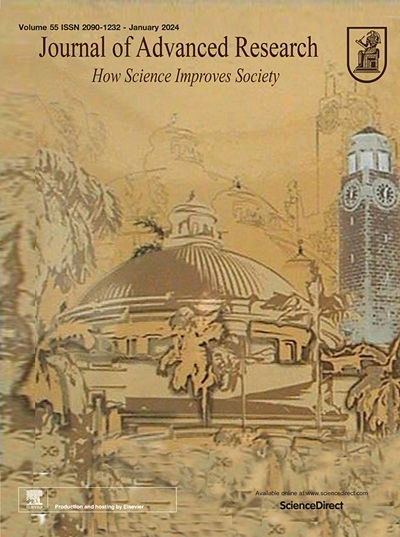大豆中的 CRISPR/Cas 基因组编辑:克服现有瓶颈的挑战和新见解。
IF 11.4
1区 综合性期刊
Q1 MULTIDISCIPLINARY SCIENCES
引用次数: 0
摘要
背景:大豆因其在食品、饲料和生物柴油产业中的应用而成为世界性的栽培作物。大豆基因组编辑始于 ZFN 和 TALEN 技术;然而,CRISPR/Cas 已经出现,并很快成为大豆基因组操作的首选方法,因为它更加精确、易于操作且成本效益高。最近的报道主要集中在传统的 Cas9 核酸酶、Cas9 nickase(nCas9)衍生的碱基编辑器和 Cas12a(正式名称为 Cpf1),它们是大豆中最常用的基因组编辑器。然而,要有效编辑大豆精英栽培品种的基因组,还需要克服复杂植物基因工程管道中的几个挑战。这些挑战包括:(1) 优化 CRISPR 盒设计(即 gRNA 和 Cas 启动子、gRNA 设计和测试、gRNA 数量和二元载体);(2) 提高转化频率;(3) 提高目标植物细胞的编辑效率比;(4) 提高大豆作物产量:本综述概述了利用 CRISPR/Cas 技术进行大豆基因组编辑的情况,讨论了当前面临的挑战,并重点介绍了克服现有瓶颈的理论(见解)和实践建议:CRISPR/Cas 系统是作为细菌先天免疫系统的一部分被发现的。它已被用作基因组编辑的生物技术工具,并有效地应用于大豆,以揭示基因功能,改善大豆的产量和营养谷物品质等农艺性状,并增强生物和非生物胁迫耐受性。迄今为止,编辑效率已通过原生质体和毛细根试验得到验证,而稳定的植物转化则依赖于农杆菌介导和粒子轰击方法。尽管如此,CRISPR/Cas 工作流程的大部分步骤仍需优化,以便在大豆植物中实现更有效的基因组编辑。本文章由计算机程序翻译,如有差异,请以英文原文为准。

CRISPR/Cas genome editing in soybean: challenges and new insights to overcome existing bottlenecks
Background
Soybean is a worldwide-cultivated crop due to its applications in the food, feed, and biodiesel industries. Genome editing in soybean began with ZFN and TALEN technologies; however, CRISPR/Cas has emerged and shortly became the preferable approach for soybean genome manipulation since it is more precise, easy to handle, and cost-effective. Recent reports have focused on the conventional Cas9 nuclease, Cas9 nickase (nCas9) derived base editors, and Cas12a (formally Cpf1) as the most commonly used genome editors in soybean. Nonetheless, several challenges in the complex plant genetic engineering pipeline need to be overcome to effectively edit the genome of an elite soybean cultivar. These challenges include (1) optimizing CRISPR cassette design (i.e., gRNA and Cas promoters, gRNA design and testing, number of gRNAs, and binary vector), (2) improving transformation frequency, (3) increasing the editing efficiency ratio of targeted plant cells, and (4) improving soybean crop production.
Aim of review
This review provides an overview of soybean genome editing using CRISPR/Cas technology, discusses current challenges, and highlights theoretical (insights) and practical suggestions to overcome the existing bottlenecks.
Key scientific concepts of review
The CRISPR/Cas system was discovered as part of the bacterial innate immune system. It has been used as a biotechnological tool for genome editing and efficiently applied in soybean to unveil gene function, improve agronomic traits such as yield and nutritional grain quality, and enhance biotic and abiotic stress tolerance. To date, the efficiency of gRNAs has been validated using protoplasts and hairy root assays, while stable plant transformation relies on Agrobacterium-mediated and particle bombardment methods. Nevertheless, most steps of the CRISPR/Cas workflow require optimizations to achieve a more effective genome editing in soybean plants.
求助全文
通过发布文献求助,成功后即可免费获取论文全文。
去求助
来源期刊

Journal of Advanced Research
Multidisciplinary-Multidisciplinary
CiteScore
21.60
自引率
0.90%
发文量
280
审稿时长
12 weeks
期刊介绍:
Journal of Advanced Research (J. Adv. Res.) is an applied/natural sciences, peer-reviewed journal that focuses on interdisciplinary research. The journal aims to contribute to applied research and knowledge worldwide through the publication of original and high-quality research articles in the fields of Medicine, Pharmaceutical Sciences, Dentistry, Physical Therapy, Veterinary Medicine, and Basic and Biological Sciences.
The following abstracting and indexing services cover the Journal of Advanced Research: PubMed/Medline, Essential Science Indicators, Web of Science, Scopus, PubMed Central, PubMed, Science Citation Index Expanded, Directory of Open Access Journals (DOAJ), and INSPEC.
 求助内容:
求助内容: 应助结果提醒方式:
应助结果提醒方式:


